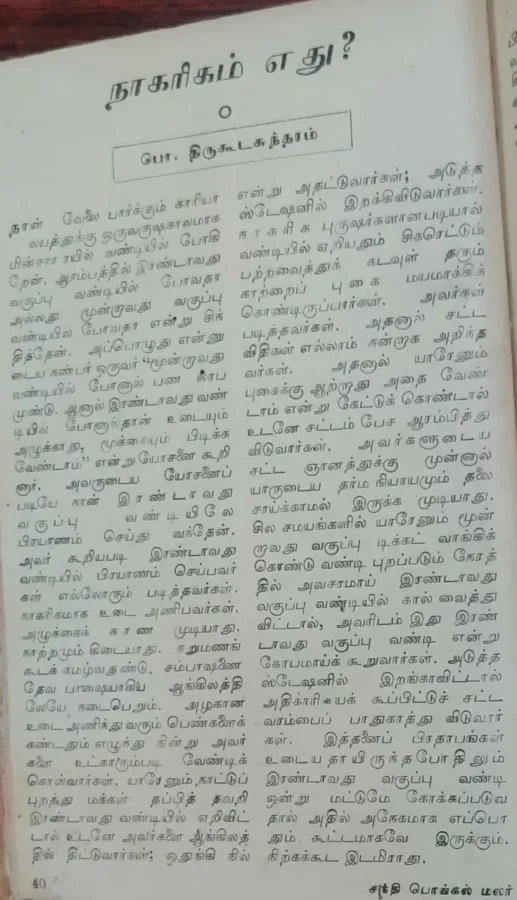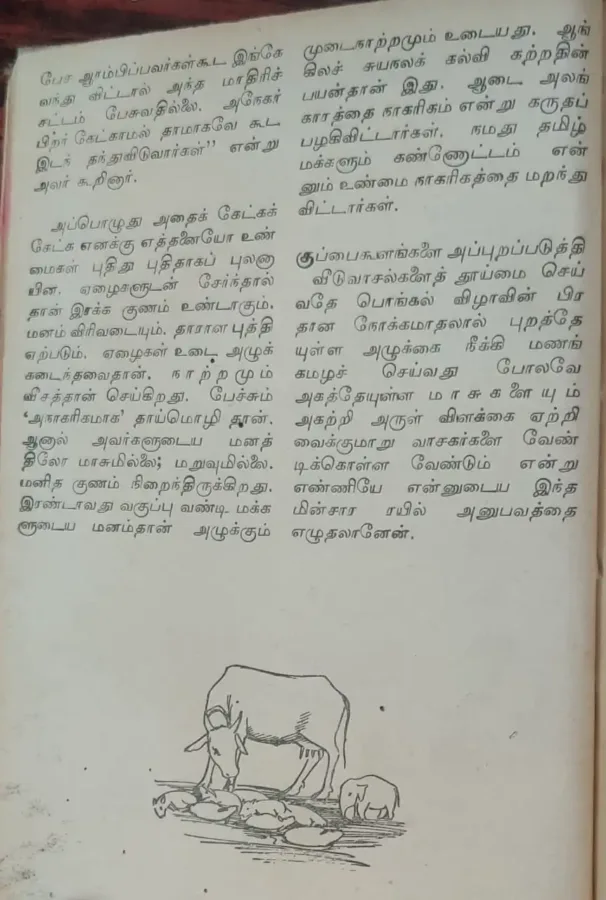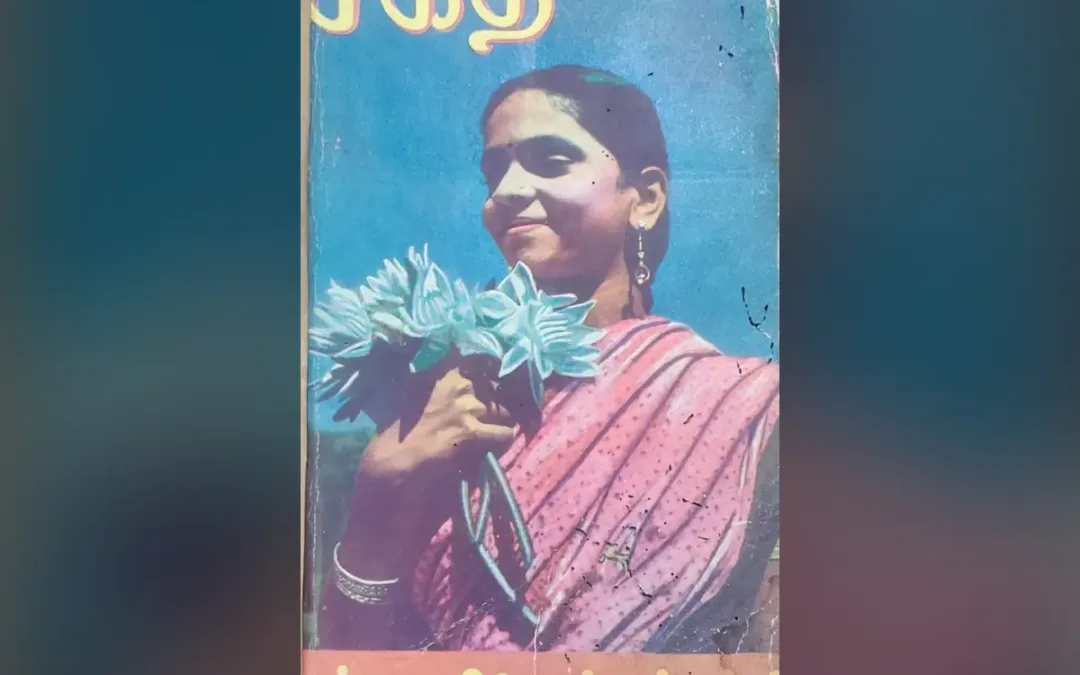Read in : தமிழ்
The other day rummaging through my attic for something, I caught sight of a trunk that aroused my curiosity. For a moment, I held myself back, fearing it might be a Pandora’s box. Yet, undaunted, I went on to open the box to find a book bathed in dust. Dusting off the book, I noticed that it was Sakthi (Pongal edition), 1949. Memories flooded back to my mind and I realised it was the old Tamil magazine Sakthi, which was quite popular back in the day.
My attic (paran in Tamil) is home to old bottles, vessels gifted to granddaughters for wedding by grandmas and great-grandmas, easy-chairs that used to keep grandfathers — mostly couch potatoes — comfortable in the twilight of their life, four-legged chairs bereft of one leg, a wedding blanket in tatters, walking sticks that walk no longer, pickle jars filled with cobwebs, moth-eaten postcards and inland letters dripping with affections expressed by close relations…all memories and materials that sank into oblivion, sleeping uncared for and unnoticed as rejects in the paran.
In moments of pure serendipity, my paran throws up books from a trunk of my grandfathers’ times. The books, dog-eared and silverfish-eaten, now and then tumble out of a pile predating 1950, that is a hunting ground of moths and all sorts of inconceivable insects.
Tamil magazine Sakthi took pride of place among journals of the past; it was quite noteworthy for its glossy cover and pages of good quality and for its equally qualitative content. It bore testimony to the sterling qualities of its editor ‘Sakthi’ Vai Govindan, one of the pioneers of Tamil journalism
This column brings those books one-by-one to light. An intro about an old book and some excerpts make up this column.
(Note: Most of the books that figure in this column are out of edition. Yet sometimes, as it turns out, some old books are brought out in new editions. That can be forgiven as it will not be a regular occurrence).
Tamil magazine Sakthi, whose special copy I caught hold of recently, took pride of place among journals of the past. Sakthi was quite noteworthy for its glossy cover and pages of good quality and for its equally qualitative content. Its editor Vai Govindan was one of the pioneers of Tamil journalism, distinguished by his sharp intellect erudition and practice of slogging away at work. Sakthi bore testimony to his sterling qualities as a journalist.
Also Read: From My attic: Once popular Tamil writer Thi Ja Ra
Well-known writers of the day, such as K Azhagirisamy and other scholars, contributed to the development of the Tamil magazine which was unique in terms of form and content and appealed to swarms of readers.
Sakthi was a household name in Tamil society then; it was so celebrated that it figured in a scene in a Tamil blockbuster Thigambaram Samiyar (1950) featuring in the lead M N Nambiar, who would strike a purple patch as villain nonpareil in Tamil films. In hindsight, Nambiar has done one better than Sivaji Ganesan and Kamal Haasan by donning the role of 11 characters in a single film.
Sakthi was a household name in Tamil society then; it was so celebrated that it figured in a scene in a Tamil blockbuster Thigambaram Samiyar (1950) featuring in the lead M N Nambiar, who would strike a purple patch as villain nonpareil in Tamil films
Coming back to Sakthi, however, the magazine over the years started falling on bad days before being knocked out of existence for good at one point of time.
A couple of books have recorded Sakthi’s history as well as the biography of its editor Govindan.
Also Read: From the attic: A 1957 book shows Periyar in new light
A small article titled ‘Naagariham Ethu?’ (What is decency and decorum?) written by Po Thirukooda Sundaram is produced here so that present-day readers will have a taste of the Tamil prose style that had been in vogue about 72 years ago.



Read in : தமிழ்











